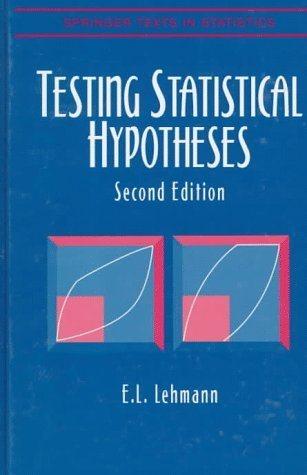66. In the preceding problem consider arbitrary contrasts [c;~; , [c; = O. The event (120) I(...
Question:
66. In the preceding problem consider arbitrary contrasts [c;~; , [c; = O. The event (120) I( x, - X;) - (~j - ;) I £\ for all i *" j is equivalent to the event £\ (121) ILc;X; - Lc;~;1 s 2" Lkl for all c with Lc, = 0, which therefore also has probability y. This shows how to extend the Tukey intervals for all pairs to all contrasts. [That (121) implies (120) is obvious. To see that (120) implies (121), let y; = Xi - ~; and maximize l[c;y;1 subject to I~ - y;! £\ for all i and j . Let P and N denote the sets {i :
c, > O} and {i:
c, < O}, so that LC;y; = L c;y; - L Ic;IY;· i e P i e N Then for fixed
c, the sum [c;y; is maximized by maximizing the Y; 's for i E P and minimizing those for i E N. Since I~ - Y;I £\, it is seen that [c;y; is maximized by y; = fj./2 for i E P, Yi = -fj./2 for i E N. The minimization of tc;y, is handled analogously.
Step by Step Answer:







